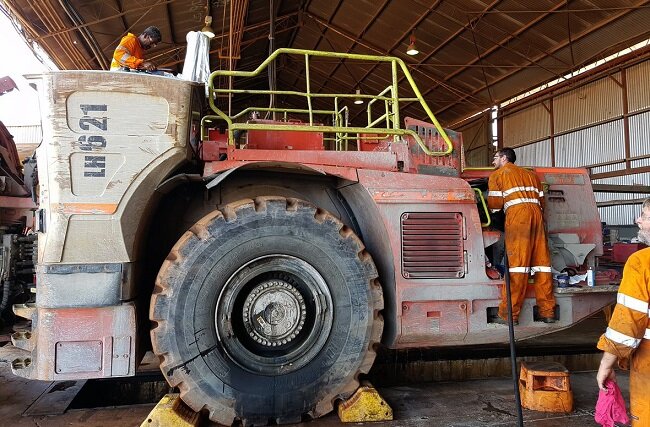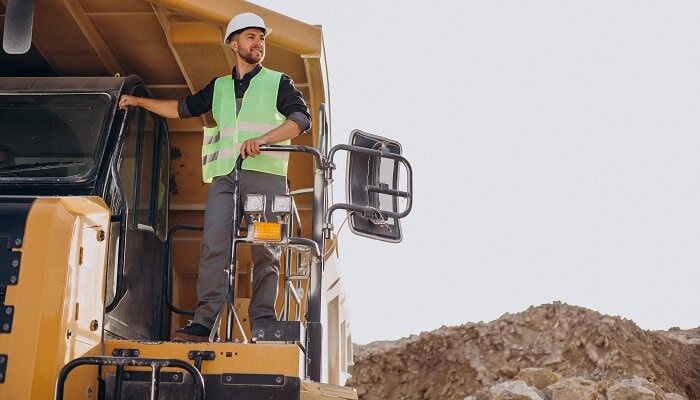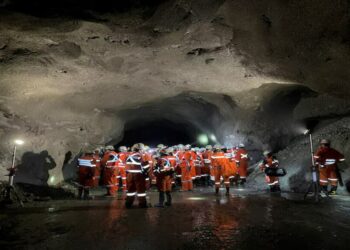The mining industry has always been fraught with inherent risks. Despite modern safety measures, accidents continue to occur, often with deadly results. As such, the quest to continually improve mine safety is of utmost importance. One such measure that seems quite basic yet plays a crucial role in ensuring mine safety is handrails. This article aims to shed light on the importance of handrails in the mining industry, particularly on underground mining handrails.
Handrails are a fundamental safety feature of any workplace setting that includes heights or depths, such as mines. They protect employees from dangerous drops, slips and spills by offering a sturdy grip in precarious situations. But their role in underground mines is far more critical. Handrails act as guidance systems in dark, treacherous terrains, helping workers navigate without losing their way or stepping into danger.
In the chaos of an underground mine, where equipment is continually moving around and workers are busily focusing on their tasks, a sturdy handrail can make a significant difference. It provides a real physical barrier between the staff and potential hazards such as moving machinery, deep pits, and steep stairs, effectively preventing disastrous accidents before they occur.
Preventing Disaster: The Significance of Handrails
One might question how something as simple as handrails can play such a massive role in accident prevention. In reality, they work on multiple facets. Firstly, they provide a means to steady oneself, reducing the chances of slips and trips, which are all too common and fatal underground. Secondly, they offer guidance and orientation, especially in conditions of poor visibility often found deep underground.
Handrails serve as the unsung heroes of underground mine safety. They stand as the silent sentinels, preventing tragedy from striking in the dark, tumultuous depths. These unassuming structures, often taken for granted, serve a paramount purpose in safeguarding the lives of mine workers.
Steadying Steps and Guiding Workers: How Handrails Work
Imagine navigating the treacherous terrain of an underground mine without the reassuring presence of a handrail. Every step would be a gamble, every corner a potential catastrophe. Handrails, through their simple yet effective design, offer a lifeline to miners.
The constant movement of equipment in mines creates a hazardous environment. Workers must frequently traverse uneven paths, slippery surfaces, and precarious staircases. Without handrails, the risk of accidents skyrockets. A sudden slip or stumble can lead to catastrophic consequences.
Beyond Walkways: Handrails on Heavy Machinery

It is also essential to remember that handrails are not just for walking paths or stairways. They play a significant role when installed on heavy machinery, aiding in safe boarding and alighting. Also, they work as physical boundaries, helping to keep workers and machinery separate, significantly reducing the risk of accidents.
Heavy machinery is the lifeblood of underground mining operations. From colossal drilling rigs to massive haul trucks, these machines are indispensable. However, they also pose a considerable threat to the safety of workers. Accidents involving heavy machinery can result in severe injuries or fatalities.
Safety Initiatives and the Future of Mine Safety
The mining industry’s future in terms of workplace accidents looks positive as more focus and attention are given to safety. Institutions like the Mine Safety and Health Administration are regularly coming up with standards to safeguard mine workers’ safety. The European Union, likewise, has a whole suite of directives focused on mine safety. These include standards for handrails meant for mining operations.
The proactive approach taken by regulatory bodies is a beacon of hope for the mining industry. With each new safety guideline and regulation, the industry inches closer to creating a safer working environment for its employees. Handrails, as a critical component of these regulations, are integral to this progress.
Neglected Safety Measures: The Urgent Need for Proper Handrails
It is undeniable that these basic features yield substantial results when it comes to preventing accidents. Yet, it’s astonishing how many mines don’t adhere to proper handrail safety. Workers are often found working in conditions that have poor handrail systems installed or sometimes, worse, none at all. This overlook may be due to ignorance, haste, or in an attempt to cut costs.
In the pursuit of profit, safety is sometimes sacrificed. This shortsighted approach not only endangers the lives of workers but also proves costly in the long run due to the potential for accidents, injuries, and lawsuits. Proper handrails are a minimal investment with a massive return in terms of safety.
Ensuring Mine Safety: The Right Handrails and Regular Audits
Hence, it is crucial to stress the importance of handrails in mine safety. It’s not just about installing handrails but installing the right ones – durable, designed to withstand harsh conditions, and easily visible. Regular audit checks are just as important. They help to ensure the handrails’ integrity is upheld, and necessary changes or replacements can be made in time.
Installing handrails is not a one-size-fits-all endeavor. Underground mines are harsh environments, subject to extreme temperatures, humidity, and constant wear and tear. Therefore, handrails must be designed and constructed to withstand these challenges. Durability is not an option but a necessity.
However, installing handrails alone is not sufficient. Regular audits and inspections are essential to ensure that the handrails maintain their integrity over time. Wear and tear, corrosion, and damage from heavy equipment can compromise the effectiveness of handrails. Routine checks can identify these issues early, allowing for timely repairs or replacements.










